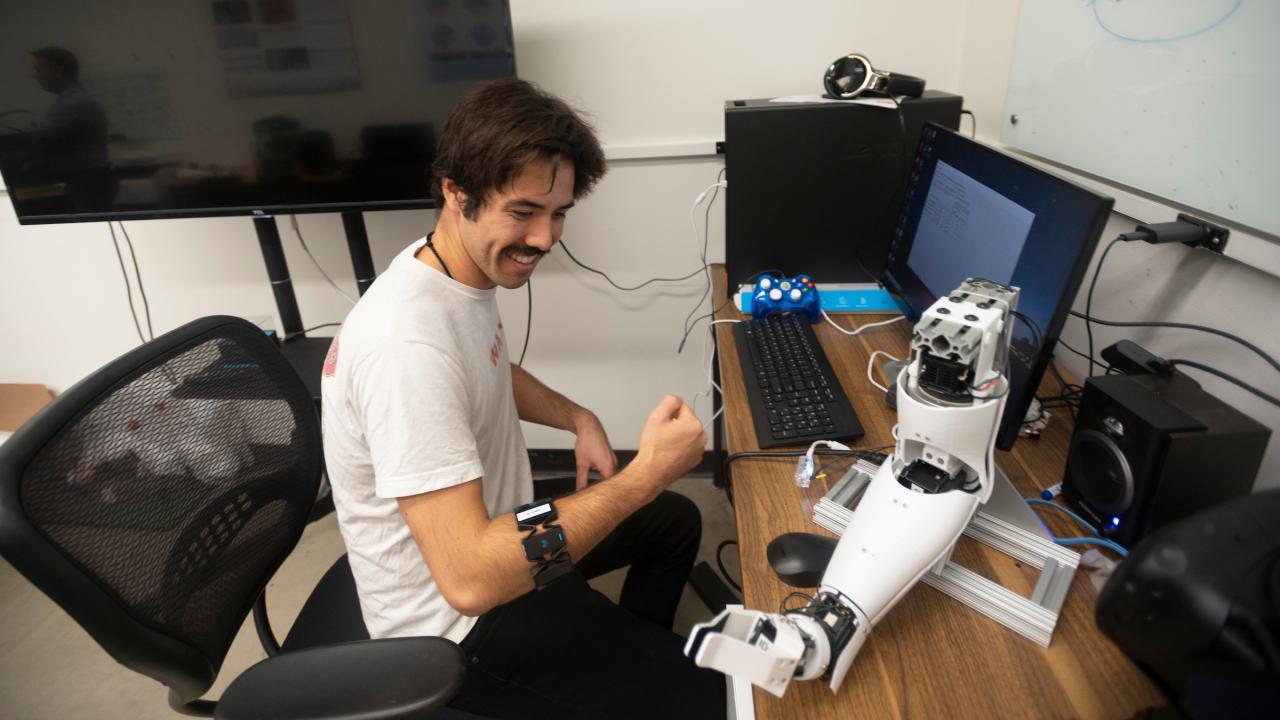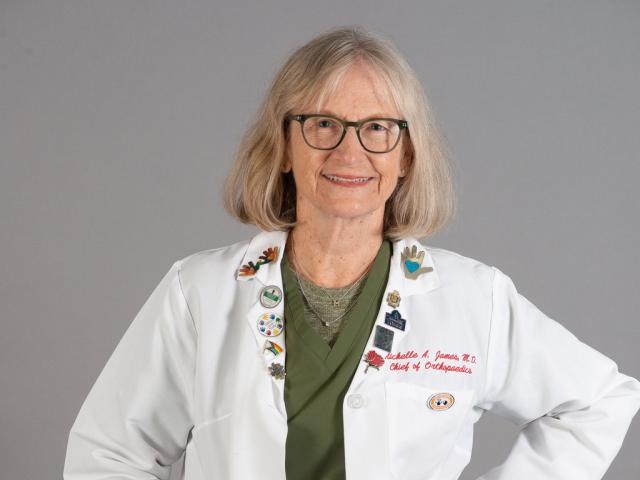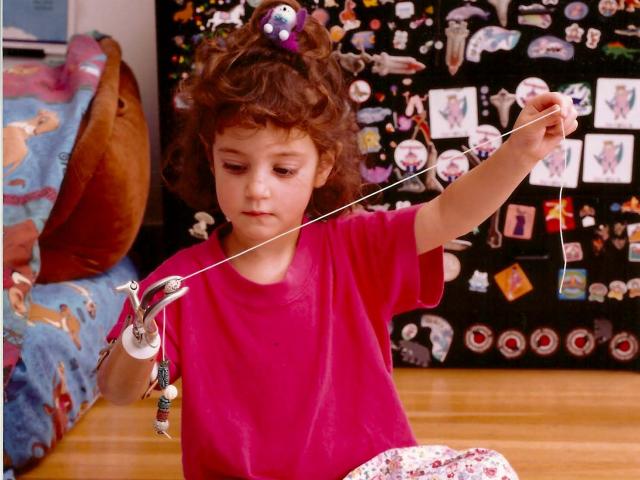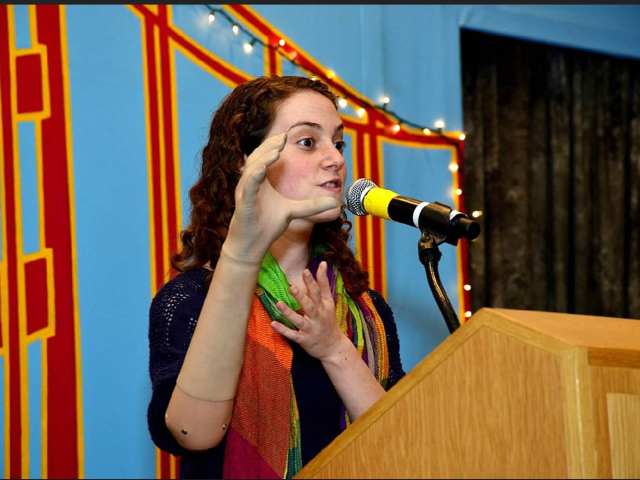
A Partnership for Better Pediatric Prosthetics
A team of University of California, Davis, researchers is part of a unique, multi-disciplinary public scholarship partnership with Shriners Children's Northern California that is not only advancing scientific discovery, but also working to create better prosthetic options for children.
The initial results of this work are unexpected and amazing, according to chief of orthopedics Michelle James, M.D. of Shriners Children's Northern California, who is a collaborator on the project and co-Principal Investigator with Shriners Children's biomedical engineering Anita Bagley, Ph.D. on one of the grants supporting this work.
Another Shriners Children's staffer added, "When Dr. James told me about the results, I almost fell out of my chair. I'm not joking!"
The UC Davis team includes the Bionic Engineering and Assistive Robotics Laboratory, or BEAR Lab, which is an interdisciplinary engineering lab that uses advanced mechatronic control and sensory feedback devices to blur the line between man and machine. It also includes Professor Wilsaan Joiner from the Department of Neurobiology, Physiology and Behavior in the UC Davis College of Biological Sciences.


Among their many research projects, this project is focused on developing prostheses with an intuitive control interface for children who were born without a hand, also known as transverse deficiency. The partnership between UC Davis researchers and Shriners Children's Northern California, located in Sacramento, is influenced by community members who are living with congenital limb differences, and is supported by grants from both the National Science Foundation and Shriners Children's Clinical Research Program.
"The idea is that we want to find a way that will allow children to control how they use their prosthesis in a very intuitive way," said Jonathon Schofield, assistant professor of mechanical and aerospace engineering and principal investigator of the BEAR Lab. "Over the course of their childhood, children who are born without a hand sometimes choose not to use a prosthesis, but when they do want to use one, we want to provide the best possible options."
A lack of pediatric prosthesis
The reason this study is so important is because there is currently a lack of viable options for children who were born without upper extremities. Most technological advancements for prostheses currently on the market are for adults who once had limbs but lost them later in life.
One reason for that is patient volume. In the United States, approximately 200 babies are born each year with transverse deficiency, and about 10,000 sustain a hand amputation.
Another reason for the lack of pediatric prosthetic innovation is because, historically, children who are born without a hand or limb often don't want to use a prosthesis because they function well without one. Many children often report that they feel like the prosthesis is in the way. This feedback from children has contributed to lack of support for creating better pediatric prostheses. Therefore, research and development for pediatric prostheses has not progressed as it did for their adult counterparts.
Yet there is a need to improve the functionality of a prosthesis for children who were born with transverse deficiency. One reason is that the daily tasks performed by children differ from those performed by adults, although they still require a range of grasp and pinch patterns. For example, an adult may want to open a jar, lift weights at the gym and chop vegetables with a knife; whereas a child wants to hang from the monkey bars, play the drums and build with Legos. Additionally, the synaptic responses during muscle control for a person born without a limb may be different than a person who was born with a limb and then lost it.
Researchers on the team want to develop a new prosthesis with a different control mechanism that takes full advantage of the body's natural inclination towards dexterity and enables multiple different grasps.
"We wanted to figure out how to translate the child's intent to action using a more effective and responsive interface that enables an array of grasp and pinch patterns, but we didn't know whether the brain of a child who never actuated a hand is capable of this," said Dr. James.
Muscles have more capacity than originally thought
For the study, the team had the patients perform a series of functionality tests, asking them to mirror with their missing hand the task being done with their present hand. Then, using artificial intelligence and advanced algorithms, the team developed sophisticated and intuitive control systems to help unlock the potential grasp or pinch function that the child was attempting to perform.
They used ultrasound and EMG, or electromyography, data to gather information about the potential muscle movement and electrical activity. They then used image processing and machine learning to analyze that data, as well as identify patterns to try and anticipate what the patient is attempting to do. What they discovered is that the children still have the ability to replicate with their residual limb the patterns that actuate several different grasps with their unaffected hand.
"This indicates that their residual muscles have far more capability to control prosthesis than we previously thought," Schofield said. "They can signal that they want to do certain tasks with their missing limb even though they don't have the limb and never had. I mean I think that's fascinating!"
Expanding nationwide
Thanks to the partnership with Shriners Children's, the team has expanded the study to include 40 more children at other Shriners Children's sites throughout the U.S. including Portland, Chicago and Greenville, South Carolina.
"Our ability to work with Shriners Children's and collaborate with such a knowledgeable crew is just a huge difference maker," Schofield said. "The depth and the richness of the data that we anticipate collecting can actually be a fairly big difference maker in terms of how these children's capabilities are viewed."
Engaging with the public to inform scholarship approach
One aspect of study that was outside the norm is that the team enlisted the input of a former patient of Dr. James, Tal Oppenheimer when setting up the study. Oppenheimer has a transverse deficiency and began using a prosthesis as a baby to assist with crawling and, according to Dr. James, tried using every prosthesis that Dr. James sent her way. Additionally, Oppenheimer obtained her undergraduate degree in neurobiology from Harvard University. For that reason, Dr. James knew Oppenheimer could bring a valuable perspective to the project.


"I do appreciate when studies seek feedback from folks who would potentially be directly impacted. Because there's the academic side of it, but you are dealing with people at the end of the day," said Oppenheimer. "I've read some papers and afterwards thought, but wait, that's not how anyone would actually use this."
Oppenheimer also appreciated that the study was focused on listening to the needs of the pediatric patients. Namely that researchers sought to better understand why children were not using a prosthesis and then apply that information to guide their proposed solutions.
Schofield said the approach of pursuing public scholarship, i.e., research that engages with and listens to the community, improves the research because it ensures that the hypothesis is relevant, and the outcomes are more likely to be useful.
"In the case of this research, mechatronics is not the challenge here, it's about applying these fundamental techniques of engineering and science in an application that is going to make a difference," Schofield said. "I think it's the opportunity to work together with such a diverse crew of people with interdisciplinary expertise as well as life experiences. That is how we create meaningful science."
